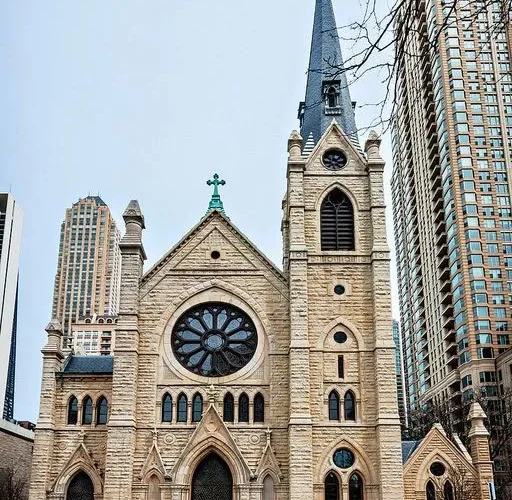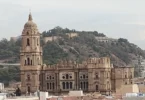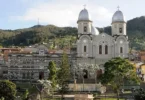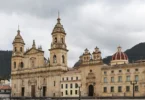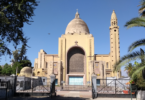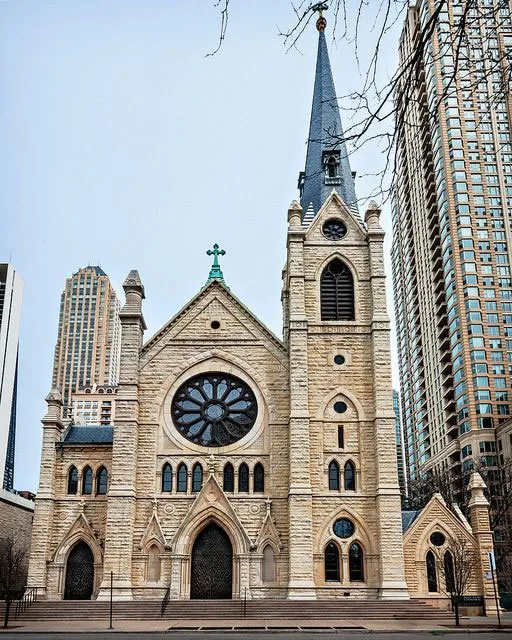
Introduction
Holy Name Cathedral in Chicago is the seat of the Archdiocese of Chicago, one of the largest Roman Catholic dioceses in the United States. The current Archbishop of Chicago is Cardinal Blase J. Cupich. Dedicated on November 21, 1875, Holy Name Cathedral replaced the Cathedral of Saint Mary and the Church of the Holy Name, which were destroyed by the Great Chicago Fire of 1871. A cornerstone inscription still bears faint indications of bullet marks from the murder of North Side Gang member Hymie Weiss, who was killed in front of the church (at the edge of the street, roughly a foot or two south of where the cornerstone is) on October 11, 1926.
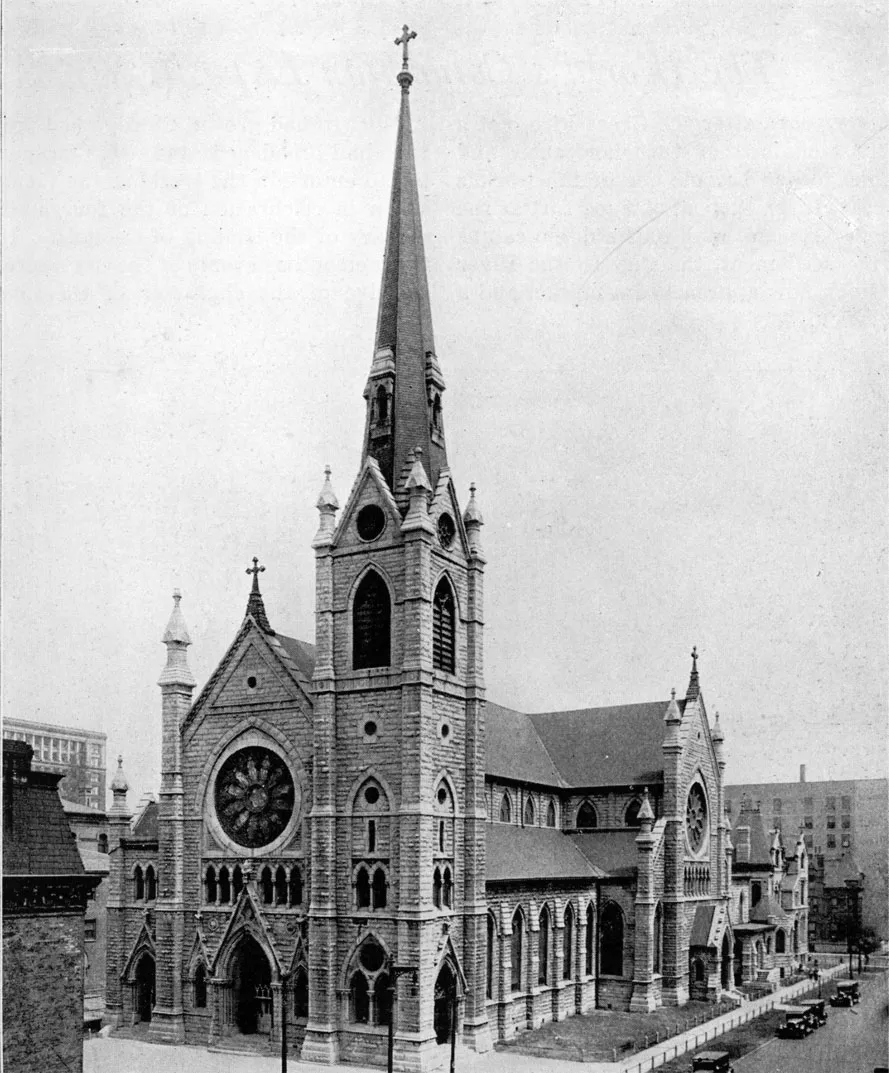
In the beginning Holy Name was not a cathedral church. The history of Holy Name Cathedral Parish is as much the story of Catholic immigrants and their new city, Chicago, as it is the story of bishops and seminaries. The Chicago Fire, the Chicago Subway, and most importantly, the dynamic changes within the city’s population and the Church itself, all left their mark on the Holy Name community. In 1924, Archbishop George Mundelein was elevated by the pope to become a cardinal. When he returned from consistory at the Vatican, the new cardinal was greeted at Holy Name Cathedral with a celebratory procession of over 80,000 Catholics. Mundelein also managed to get Chicago named the host city for the 28th International Eucharistic Congress in 1926, with the opening mass being held at the cathedral.
When Cardinal Mundelein died unexpectedly in his sleep in October 1939, Chicago City Hall hastily paved State Street where the subway was being constructed to accommodate the great influx of mourners expected to make the pilgrimage. As Cardinal Mundelein lay in state in the nave of Holy Name Cathedral, over a million people paid their last respects. It has grown from a parish in a small wooden church built under extreme hardship to today’s flourishing, urban community. Holy Name is diverse in the ages of its parishioners, their ethnicity, their economic status, and its many activities, which grow from its dual role.
Papal visit of 1979
In October 1979, Pope John Paul II became the first Pontiff to visit Holy Name Cathedral, for a prayer service with Chicago’s bishops as well as a concert featuring the music of Luciano Pavarotti and the Chicago Symphony Orchestra, in the nave of the cathedral. The congregation also prayed the Our Father in Latin at the request of the Pope.
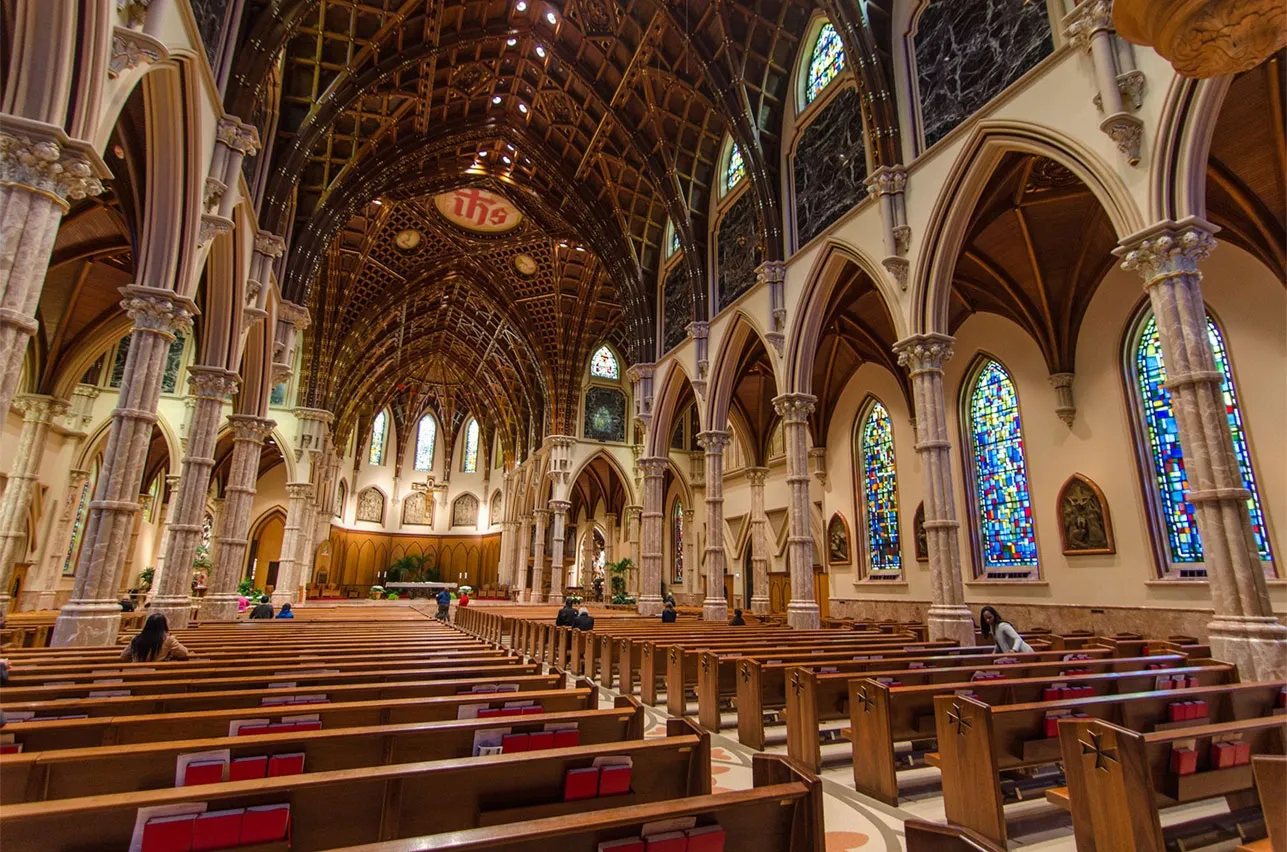
Holy Name Cathedral was built in the Gothic revival architectural style while at the same time integrating motifs symbolic of the message of the modern Church. The church building is 233 feet (71 m) long, 126 feet (38 m) wide and can seat 1,110 people. The ceiling is 70 feet (21 m) high and has a spire that reaches 210 feet (64 m) into the sky. Overall, the cathedral features motifs meant to instill an ambience of physically dwelling in the biblical tree of life.
Bronze cathedral doors
The first feature that greets worshipers are massive bronze doors designed by Albert J. Friscia that weigh 1,200 pounds (540 kg) each. The doors introduce the overall “Tree of Life” theme with intricate details that serve to make the doors look like overwhelming planks of wood. The doors possess a hydraulic system that allows them to be opened with the push of a finger. Beyond the doors is a vestibule encased in glass.
Resurrection crucifix
Once inside the church, the most striking feature is the suspended Resurrection Crucifix sculpted by the artist Ivo Demetz. Adorning the walls of the nave are the Stations of the Cross by artist Goffredo Verginelli depicting the Passion, Crucifixion and Resurrection of Christ. The stations are cast in bronze and framed in red Rocco Alicante marble.
Ambo of the Evangelists
Various bronze sculptures are featured in other parts of the church. One of the largest pieces is the Ambo of the Evangelists by Eugenio de Courten. An ambo, in church liturgy, is the lectern from which readings of Holy Scripture are proclaimed. The bronze casting depicts the authors of the Gospels with their symbols: Matthew the angel representing the Gospel of the Church; Mark, the lion and inspiration for Peter’s teachings or catechesis; Luke, the ox, for his recounting of Christ’s infancy; John, the eagle, for the writer of the Spiritual Gospel, recounting the story of “the Word made flesh.”
Ambo of the Epistle Writers
Also by de Courten is the Ambo of the Evangelists, a bronze casting depicting the authors of the apostolic letters to the early Church communities: Peter, with keys to the Kingdom of God; Paul, who died by the sword; James, representing faith sustained by good works; and Jude, carrying a whip representing correction. This particular ambo is used by lectors and cantors during Sunday Masses and other special Church feasts and memorials.
Altar
Six tons of monolithic red-black Rosso Imperiale di Solberga granite forms the mensa or table top of the altar. The pedestal is encircled by a bronze bas-relief depicting Old Testament scenes of sacrificial offerings and preparation: Abel’s offering of the first sacrifice, the priest Melchizedek giving bread and wine, Abraham’s willingness to sacrifice his son Isaac, and the Prophet Elijah receiving bread and water from the Angel of the Lord for strength to continue on his journey. The consecrated altar contains relics, or actual artifacts from the bodies of Saint John the Apostle and Saint Timothy.
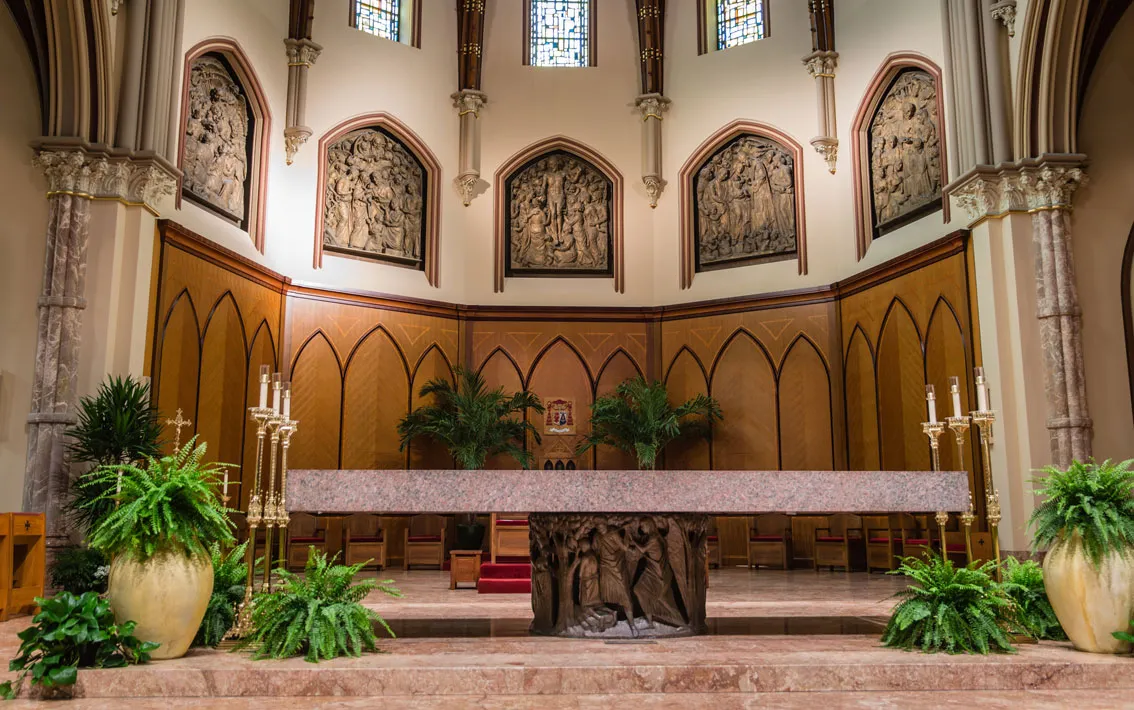
Cathedra of the See of Chicago
A cathedra, or bishop’s throne, is what makes the church a cathedral. It is from this chair that Sedes Chicagiensis, or See of Chicago, is presided over by the archbishop of Chicago. Unlike most Roman Catholic cathedra, the Cathedra of the See of Chicago is plain and simple. Its back contains three panels depicting the first Christian teachers: Christ in the center panel, Saint Peter to his right, and Saint Paul to his left.
Sanctuary Panels of the Holy Name
Above the cathedra are the Sanctuary Panels of the Holy Name, five bronze panels by Attilio Selva representing the Holy Name of Jesus from which the church gets its name. The first panel is of Simeon contemplating the Infant Savior whom Mary presents in the Temple. The second panel depicts the Mystery of the Trinity and an angel carrying the monogram of Christ to earth. The third panel is of the Risen Christ proclaimed as Lord. The fourth panel is of the Presentation of Jesus in the Temple showing Mary and Joseph presenting the child for circumcision and naming. The last panel is of the Priesthood of Jesus, with Christ adorned investments presenting the chalice to all people. Holy Name Cathedral underwent extensive emergency repairs from February 2008 through August 2008 due to a piece of the ornate wooden ceiling falling to the floor the night of February 10, 2008. Upon further inspection and more pieces falling—the cathedral was closed for emergency repairs. It reopened to the public for weekend Masses the weekend of August 30–31. It fully reopened on November 17, 2008.
It closed again after a major fire on February 4, 2009, which started in the attic where workers were finishing up emergency work that began in February 2008. The cause of the fire was determined to be a faulty ice melting system in the roof line of the church. The facility suffered extensive water damage. Fr. Matthew Compton, after going door to door through the rectory to help evacuate, then rescued the Blessed Sacrament with a fire department chaplain. Firefighters entered the burning attic without their helmets and oxygen tanks. A fire in the attic of a building in the style of Holy Name Cathedral is usually declared a loss and just contained; the action of the firefighters that day saved The structure. The restoration work following the fire was performed by Daprato Rigali Studios. All Masses for the weekend were moved to the auditorium as they had been during 2008. The Archdiocese of Chicago floated a loan to Holy Name in order to finance the repairs. The cathedral reopened the weekend of August 1, 2009.
Holy Name Cathedral
As a world-famous Cathedral, we welcome thousands of visitors every week from all over the planet, all over the United States, and all over Chicagoland. Stop by to join us for what we do best – praise God.
Light of Candle
Light a Prayer Candle at Holy Name Cathedral Have one of our resident priests light a Cathedral candle with your prayer intention that will remain lit for one day. Each week, your prayer intention will be placed on the Cathedral Altar for inclusion in a Private Mass offered by one of our priests.
Annual Feast Day
Feast day: 3rd January
The Holy Name of Jesus is celebrated in the Catholic Church on January 3rd.
Mass Timing
Weekdays:
Monday – Friday at 7:00am; 8:00am (livestream) and 12noon; Wednesday (only) at 5:15pm,
Weekend:
Saturday mornings at 9:00am
Saturday Evening Vigil Mass: 5:15pm
Sunday: 7:00am, 8:30am, 10:30am; 12:30pm, 5:15pm
Confessions (Saturdays) In the Cathedral
9:00am – 12:00pm noon (no reservations needed – first come, first serve)
Contact Info
Holy Name Cathedral,
730 N Wabash Ave,
Chicago, IL, 60611,
United States.
Phone No
Phone: +1 312-787-8040
Accommodations
Connectivities
Airway
Chicago O’Hare Airport (ORD) to Holy Name Cathedral Distance: 30.4 km Duration: 54 min
Railway
Holy Name Cathedral to 95th/Dan Ryan Station 31 min Average Duration distance 19.7km

